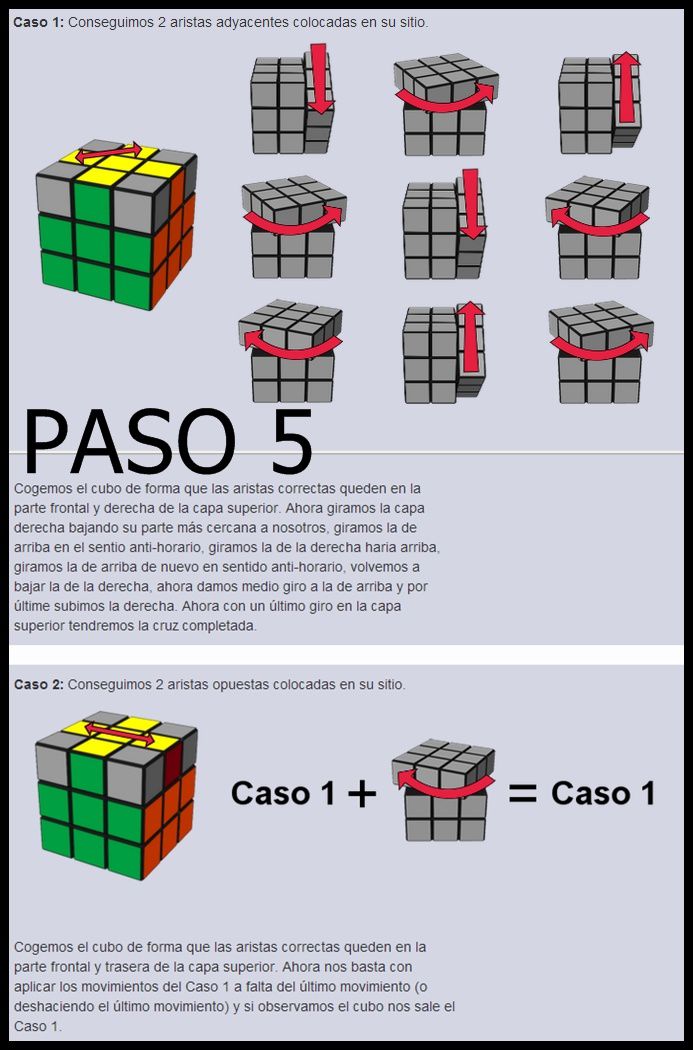
The Rubik’s Cube is a STEM accredited product and helps build skills including patience, dexterity, and problem-solving.
#Como armar un cubo rubik 3x3 free
This app is free to download, there’s no pay-to-solve and no ad pop-ups. Track your results, and see your best solves and overall averages.

Time yourself solving a real Rubik’s Cube using the official cube timer and see yourself getting faster. Play around on the Virtual Cube, or time yourself to see how fast you can solve it. No matter your skill level, there are options for the whole family! If it’s your first time solving, perhaps start with the Rubik’s Mini (2x2) or the original Rubik’s Cube (3x3), and when you feel confident or ready for the next challenge, move up to the Rubik’s Master (4x4), or the ultimate challenge, the Rubik’s Professor (5x5). Practice here before you try the real thing. Solve the classic Rubik’s Cube or Picture Cube using finger swipes on screen. Impress your friends by solving a Rubik’s Cube in about 20 moves. Get interactive voice guidance while learning from the teacher.
#Como armar un cubo rubik 3x3 how to
Learn how to solve a real Rubik’s Cube using the Rubik’s method, which has been tried and tested by millions of solvers around the world. Learn to solve or solve a real-life Rubik's Cube in about 20 moves, using Augmented Reality. Turn, twist and repeat – the FREE Rubik's Official Cube app let you experience the classic puzzle in a completely new way through the eyes of AR!ĭo you have what it takes to solve the world's favorite puzzle? A legendary mental challenge for at home and on the move, and now on mobile! It is the world's best-known addictive puzzle and has fascinated fans since its launch in 1980.

In the 21st century very little attention has been paid to corners-first methods for 3x3x3 cubes although there are similarities with the highly-efficient Roux Method.

Around that time Marc Waterman and Daan Krammer developed the Waterman Method, a highly evolved corners-first method with more than 100 algorithms, allowing Marc Waterman to achieve sub-17-second averages and some of the fastest times of the 1980s. The first official speedcubing World record (in 1982) was done using corners first (22.95 secs by Minh Thai). One of the first published guides specifically intended for speedcubing was Jeffrey Varasano's 1981 book Conquer the Cube in 45 Seconds which used a corners first solution. The first ever solve of a Rubik's Cube was by Ernő Rubik himself in 1974, and he used a corners first solution he developed himself over several weeks. The most popular methods for solving the corners are Guimond, Ortega, and CLL there are many ways to do the edges, perhaps the most efficient of which is the Waterman method. For the 2x2x2, on the other hand, there are only corners, so any method is in effect a CF method, and ideas from 2x2 solving can be applied to CF methods on any larger cube puzzle. At least in theory, CF methods exist for all puzzles with corners, although for many puzzles (such as big cubes) they are impractical for speedsolving. There are not very many serious CF solvers for 3x3x3 these days, but CF methods are relatively easy to invent and were very popular in the 1980s. Corners First methods, abbreviated as CF, are speedcubing methods that solve all of the corners (relative to each other) before anything else.


 0 kommentar(er)
0 kommentar(er)
